Speakers at the Second edition of The Consultant Contractor Conference attempted to analyse, understand and seek solutions to the issues plaguing the MEP contracting and consulting space. Here are the key issues that were discussed…
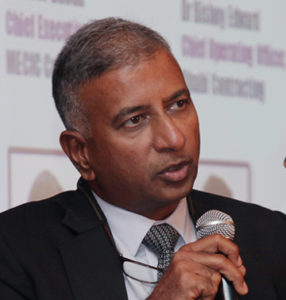
Sekhar Reddy, Head MEP, Meydan One Mall, MS
Construction
The survival of a product depends on its ability to infuse confidence in an end-user, said Sekhar Reddy, Head MEP, Meydan One Mall, MS Construction, while setting the tone at the second edition of The Consultant Contractor Conference, held on October 16, in Dubai. “As custodians of the MEP industry,” he said, “it is the responsibility of MEP consultants and contractors to safeguard this belief.” He recalled that the time after the year 2008 was when the contracting and MEP space was affected by issues, such as poor cash flow. “The market has undergone dramatic change over the years and yet it continues to regress in the manner in which contracts are conceptualised, developed and delivered,” Reddy said.

Sameer Daoud, CEO, MECIC Contracting
Echoing him was Sameer Daoud, CEO, MECIC Contracting, who said, “When we speak of delivering on a project and mitigating risks in contracts, on the part of the MEP contractor, it eventually comes down to project selection.” The way in which an MEP contractor positions himself, Daoud said, can influence project delivery.
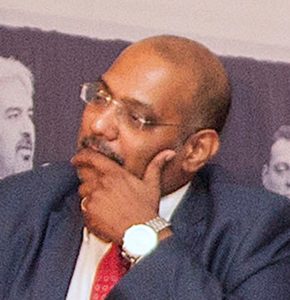
Balachandran Senthilraj, VP, Engineering and Projects, Southern General Contracting and Real Estate
Balachandran Senthilraj, Vice President, Engineering and Projects, Southern General Contracting and Real Estate, echoed Daoud and reiterated the importance of efficient project selection. He said, “Introspecting on whether the client has the ability to pay and whether the MEP contractor can deliver as per the stipulated time frames is crucial.” In certain cases, Senthilraj added, even though the clients might be big names in the market, their payments do not match the expected standard. “As many as 90% of the contracts are back-to-back and with limited budgets, the deliverables are often high but the budget is low,” Senthilraj said. Unlike the main contractor, he added, the day a contract is signed, the sub-contractor is expected to pump in the money to begin work on a project.
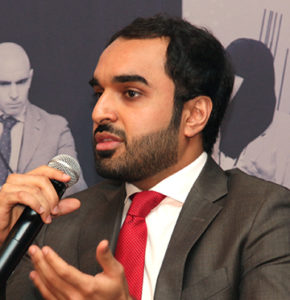
Dr Bishoy Edward, COO, Dhabi Contracting
Supporting the thought was Dr Bishoy Edward, COO, Dhabi Contracting, who said, “It is difficult to secure a project, and negotiating on the price can get tough.”
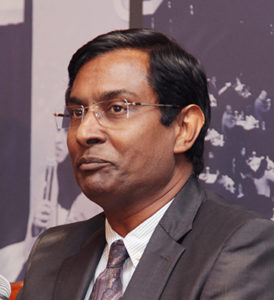
AR Suresh Kumar, GM Business Development, Voltas Ltd
However, AR Suresh Kumar, General Manager Business Development, Voltas Limited, highlighted that in addition to price, the difficulty lies in selecting a project in stressful situations. “Today’s market is all about learning to say no to the main contractor and the client,” he said. “If the sub-contractor cannot say ‘no’, then it is as good as running into a trap,” Kumar added.
In search of possible solutions, Daoud reiterated the underlying concern of delayed payments and posed a question, “After signing a project, how best can an MEP contractor mitigate risk and avoid the need for arbitration?” Proposing the use of technology as a possible solution, Andrew Schumer, MD, Black Wit Cyber Solutions, pointed out that delayed payments indicated an issue of trust and traceability. He said, in such a scenario, the application of blockchain technology to the business might help. “Blockchain will help put traceability into context,” he said. For instance, if an MEP contractor has made the delivery as per the contract, the payment process can be automated, Schumer said. However, raising a vital point, Schumer added that even though blockchain can do a great deal, in terms of securing a business and improving traceability, for it to reap good results, it must be done right. “The foundation in the technology is important and needs to be perfect,” he said. “Once you have the foundation right, yes, then you need not worry about trust as a factor.”
Edward’s take on the subject was, “Blockchain can be a good method to increase trust and traceability.” However, he said that one cannot overlook having a good relationship with the client and consultant, which is the best course of action. Pointing to a relevant issue with regard to trust, Kumar highlighted how half-baked contracts need to be dealt with appropriately. “Getting into a half-cooked detail document often puts the sub-contractor and the contractor directly at an argument stage.” For blockchain to work, he said, the client, consultant, contractor and supplier need to be at the same level of trust, in order to have the right understanding in terms of project delivery. Elaborating, Reddy pointed to the need for simplification in contracts. He said, “I have seen people go through tonnes of pages when a conflict can be settled in less than five minutes across the table.” Reddy added that battles are not won by arguments; instead they can be won through diplomacy. However, Daoud said that, so far, the biggest challenge is to get the stakeholders on the same page and working towards the same objective.
Going beyond the consultant and the contractor
However, ‘trust’ between the consultant and the contractor was not the only factor being referred to as the missing link; there was another ‘C’ to the equation. Both contractors and consultants pointed to the ‘client’ as an important stakeholder to the success of a project. Scott Coombes, Director, AESG, said that the client was the root of many existing problems. He said, “Clients do not develop enough detail related to the brief, which leaves consultants confused, with regard to what they are designing against.” As a result, he added, not only does trusting the consultant become an issue but also the fact that they are approached by clients who work with other consultants to peer-review their work. “Peer reviewing is bad and often leaves consultants criticising each other,” Coombes said. Pointing to another issue, he said, clients often push prices down, which reduces the quality of MEP products being used and the design work being done, which then results in poor deliverables.

Rob C Gregory, MEP Technical Director, Aurecon
Responding to the statement, Rob C Gregory, MEP Technical Director, Aurecon, highlighted that what you get is what you’ve paid for. “The reality is that due to the lack of time there is pressure on design and delivery, which leads to design issues,” Gregory said. Echoing him was Hassan Younes, Director, Griffin Consultants, who said, “Mistakes in design happen due to the lack of time; in addition, there are other issues such as faulty installation and commissioning, where the consultant does not have enough manpower and the contractor lacks the bandwidth to do the job well.”

Darrel Strobel, MD, MEP Engineering,
Design Division, KEO International Consultants
Darrel Strobel, Managing Director, MEP Engineering, Design Division, KEO International Consultants, pointed to design as an intent. You can show a design on a drawing, but there are instances where the contractor does not understand the intent of the drawing, he said. Reiterating the thought was Coombes, who said, “It’s terrible when you forget the specification within the project.” A part of the issue, he added, is when the main contractor squeezes the MEP contractor to make compromises on quality. As a result, it leads to faulty installation and commissioning of equipment. Gregory, however, asserted that contractors have their own pressures, and they are pressured to do a project at a particular cost. He said, “It is often a two-way street and not just a contractor issue.”
Lack of clarity in contracts and legal ramifications
In addition to competitive pricing and irregularities in cash flow, another issue addressed at the conference was the need for MEP consultants and contractors to have a good understanding of the contracts they are signing.
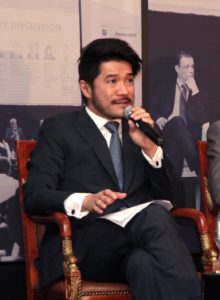
Daniel Xu, Partner, King & Wood Mallesons, MENA
Daniel Xu, Partner, King & Wood Mallesons, MENA, said, “We see a trend towards competitive pricing.” With regard to contracts, Xu highlighted that MEP contractors must have a look at the contract and introspect on whether the clauses within the contract are acceptable, before going ahead with the project.

Shawn Davis, Partner, King and Wood Mallesons, MENA
Shawn Davis, Partner, King and Wood Mallesons, MENA, stressed the importance of using contract drafts as the number one step to avoiding pitfalls. “You don’t need to start a contract from scratch,” he said. “There are plenty of contract drafts available by industry organisations, and it’s always a good practice to find an existing template that fits.” Inconsistencies, he added, especially relating to definitions, can lead to confusion and disputes.” If you put a contract before two to three people, he asserted, you want to make sure they all have the same interpretation of the contract, he said. In addition, Davis stressed the importance of striking a fair and reasonable balance with regard to limiting liability. “Not only should contractors be able to have a cap on their liability, which is often 100% of their contract price, but there should be exclusions; some of the obvious ones are fraud, negligence and high-level breaches,” Davis said.

Rachel Ewin, Director, Contract Services, Turner & Townsend International
Rachel Ewin, Director, Contract Services, Turner & Townsend International, sharing her experience as an arbitrator, said, “When contractors work on a project for 15 years, it becomes more about personalities and not so much about what’s written in black and white.” The challenge, she said, is to sit down with the parties and try and take the emotion out of it. With reference to the contract, she said, it comes down to knowing what’s written, in terms of the timescales, notice periods, etc. Arbitration, she said, is becoming increasingly popular and is being written into majority contracts.
By way of speaking on another legal aspect vital to contracts, Davis highlighted the need for version control. “Suppose you are working on version seven of a contract, others must also have version seven and not a version five,” he added. Pointing to the lack of version control as a common issue, he said that such a miss can set the project back considerably and involves a lot of risks. “Eventually, the counterparty will lose faith,” Davis said. Pointing to a crucial aspect, he added, “Contracts must have a provision for priority, which indicates that in an event of inconsistency the contract will highlight which part of the agreement takes priority.”

Peter Anagnostou, Senior Construction Lawyer, DLA Piper Middle East
Highlighting a few other challenges, Peter Anagnostou, Senior Construction Lawyer, DLA Piper Middle East, shifted focus to the need for legal consultation before a contract has been signed. “Clients always call us when it’s too late to change or make amendments to a contract,” he said. “But it is important to understand that the tribunal will look and judge based on what the contract says, making it crucial for the MEP contractor to understand how the contract will operate and what the clauses mean in a legal set-up.” Understanding both legal and commercial risks, he asserted, is the first step to protecting oneself and, hence, it is important to reach out to a legal consultant for advice before a contract is signed. With regard to termination, Anagnostou highlighted two ways. “One is where the owner has the ability to terminate it on notice, and the other where there is a cure period awarded to the other party,” he said. “You want to ensure that if you are going down the path of termination, you take into account the cure period so that you can send follow-ups. If the matter is escalated to court, you want to ensure that the terminating party has acted in good faith and in accordance with the contract.”
Copyright © 2006-2025 - CPI Industry. All rights reserved.